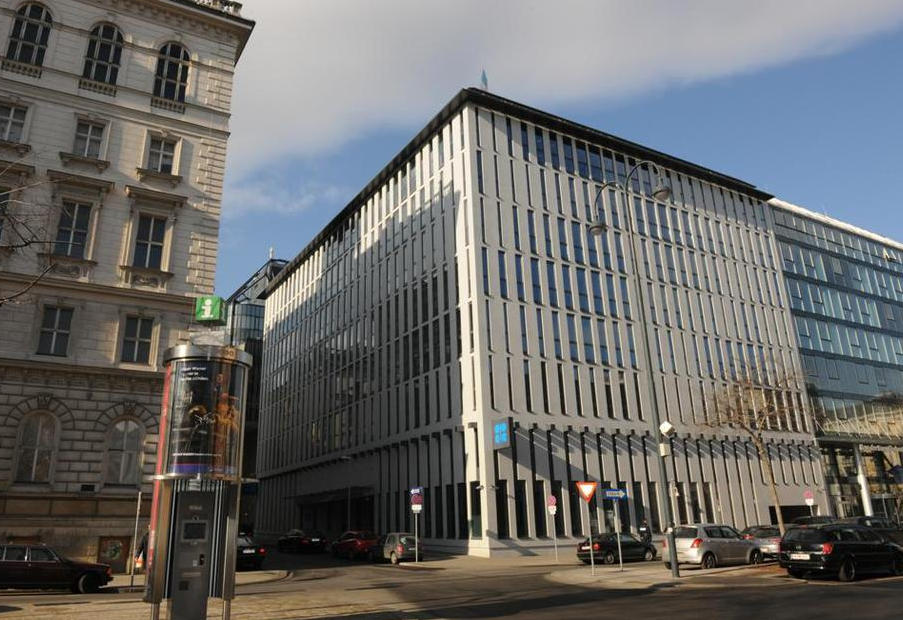
OPEC’s latest challenge to U.S. shale oil producers would be about two miles long, lined end to end, and weigh almost 3 million metric tons. It’s due to reach American ports this month.
Iraq, the fastest-growing producer within the 12-nation group, loaded as many as 10 tankers in the past several weeks to deliver crude to U.S. ports in November, ship-tracking and charters compiled by Bloomberg show. Assuming they arrive as scheduled, the 19 million barrels being hauled would mark the biggest monthly influx from Iraq since June 2012, according to Energy Information Administration figures.
The cargoes show how competition for sales among members of the Organization of Petroleum Exporting Countries is spilling out into global markets, intensifying competition with U.S. producers whose own output has retreated since summer. For tanker owners, it means rates for their ships are headed for the best quarter in seven years, fueled partly by the surge in one of the industry’s longest trade routes.
“In the longer term, we expect the U.S. to have to increase imports next year by some 500,000 barrels to 800,000 barrels a day year on year,” Steve Sawyer, the head of refining at FGE, a consultant in London. “Given our projections for Iraqi output, it could well come from here.”
Hunting for Buyers
Iraq, pumping the most since at least 1962 amid competition among OPEC nations to find buyers, is discounting prices to woo customers. The U.S. may increasingly become one of them after its own output dropped by as much as 500,000 barrels a day since June. An increase in trade between the two would boost tanker owners. Deliveries take at least 57 percent longer than for those to Asia, the most popular destination.
The tanker industry’s biggest ships earned an average of almost $76,500 a day so far in the fourth quarter, which would be the highest since mid-2008 if maintained through year-end, according to data from Clarkson Plc, the world’s biggest shipbroker.
Shipowners have already seen the benefit of higher rates thanks in part to the longer-distance cargoes. Shares of Oslo- listed Frontline Ltd., led by billionaire John Fredriksen, rose 61 percent to $28.60 from the 2015 low in August. Euronav NV is up 25 percent from the year’s low in February.
Gulf of Mexico
The ships bringing the 19 million barrels include vessels that left Iraq’s Basra Oil Terminal and are currently signaling U.S. ports as their destination. There is also one vessel that went through Egypt’s Suez Canal and identified by shipbrokers as going to the U.S. All except one are very large crude carriers, the industry’s biggest vessels, sailing to terminals in the Gulf of Mexico.
The U.S. is pumping 450,000 barrels a day less crude than during the peak in June. If all that oil were replaced by supplies from Iraq, it would require about seven supertankers each month.
Iraq is among the least expensive places in the world to extract crude. Capital costs are about seven times cheaper than for light, tight oil suppliers in the U.S. when measured by fields’ daily plateau capacity, according to the International Energy Agency in Paris.
West Texas Intermediate, the U.S. benchmark, fell 43 cents to $43.78 a barrel on the New York Mercantile Exchange at 12:12 p.m. Singapore time Wednesday. Brent, the global marker, lost 19 cents to $47.25.
The Middle East country sells its crude at premiums or discounts to global benchmarks, competing for buyers with suppliers such as Saudi Arabia, the world’s biggest exporter. Iraq sold its Heavy grade at a discount of $5.85 a barrel to the appropriate benchmark for November, the biggest discount since it split the grade from Iraqi Light in May. Saudi Arabia sold at $1.25 below benchmark for November, cutting by a further 20 cents in December.
“It’s being priced much more aggressively,” said Dominic Haywood, an oil analyst at Energy Aspects Ltd. in London. “It’s being discounted so U.S. Gulf Coast refiners are more incentivized to take it.”
Recommended for you
